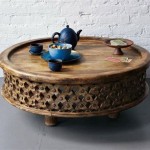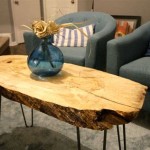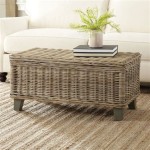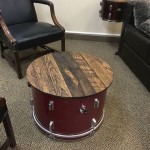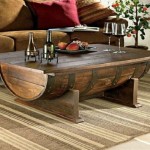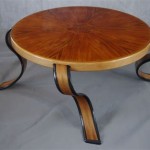Advantages of Glass and Wood Coffee Tables: Exploring Design, Durability, and End Lifespans
Coffee tables are central pieces in living rooms and other social spaces, serving both functional and aesthetic roles. Two popular materials for coffee tables are glass and wood, often combined in different designs to maximize their respective advantages. Understanding the benefits and limitations of glass and wood coffee tables, as well as considering their end lifespans, is important for making informed purchasing decisions.
The combination of glass and wood in coffee table construction offers a balance of visual appeal and structural integrity. Glass provides a sleek, modern look, often creating an illusion of more space and light. Wood, on the other hand, offers warmth, character, and robustness. This combination translates into a versatile piece of furniture that can complement a wide array of interior design styles, from minimalist and contemporary to rustic and traditional.
This article explores the advantages inherent in glass and wood coffee tables, examining their design flexibility, durability, and considerations for their end lifespan. Considering these factors allows individuals to select a coffee table that meets both their immediate needs and long-term expectations regarding aesthetic preferences, utility, and environmental responsibility.
Aesthetic Versatility and Design Flexibility
One of the primary advantages of glass and wood coffee tables is their aesthetic versatility. Glass, whether clear, frosted, or tinted, lends an air of sophistication and can visually enlarge a room. Its transparency allows the floor covering or rug beneath to remain visible, preventing the table from dominating the space. This works particularly well in smaller rooms where maximizing the perception of space is crucial.
Wood, conversely, introduces natural warmth and texture. Different wood types, such as oak, maple, walnut, or pine, possess unique grain patterns and colors that can enhance the overall design. A stained wood finish can further customize the appearance, aligning it with the existing color scheme of the room. The contrast between the sleek glass and the natural wood creates a visually appealing juxtaposition.
Design flexibility is also a significant benefit. A glass top can be paired with various wood base designs, ranging from simple, straight-legged structures to more elaborate, sculptural forms. The wooden base can be crafted into different shapes, such as rectangular, square, round, or oval, catering to diverse spatial requirements and aesthetic preferences. The glass can also be shaped in various ways, though rounded edges are generally preferred for safety reasons.
Furthermore, the integration of glass and wood allows for experimentation with different styles. A glass top paired with a rustic wooden base creates a farmhouse-chic ambiance, while a sleek glass top with a dark, lacquered wood base aligns with a modern aesthetic. This adaptability makes glass and wood coffee tables suitable for a variety of interior design themes, ensuring they can seamlessly integrate into existing or newly renovated spaces.
The minimalist design aesthetic often favors glass tops paired with simple wood frames. This combination highlights the clean lines and understated elegance of both materials. In contrast, more elaborate designs may incorporate intricate woodworking details, showcasing the craftsmanship and artistry involved in creating the piece. The design possibilities are virtually limitless, limited only by the imagination and the skill of the designer or craftsperson.
Durability and Maintenance Considerations
The durability of a glass and wood coffee table depends significantly on the quality of the materials used and the construction techniques employed. Tempered glass, which is significantly stronger than standard glass, is typically used for coffee table tops. This type of glass is less likely to shatter and, if broken, will crumble into small, relatively harmless pieces instead of sharp shards. This enhances the safety, particularly in households with children or pets.
The type of wood used for the base also contributes to the table's overall durability. Hardwoods like oak, maple, and walnut are more resistant to scratches, dents, and wear compared to softwoods like pine. The wood should be properly seasoned and treated to prevent warping, cracking, or insect infestation. A well-constructed wooden base provides a stable and robust support for the glass top.
Maintenance is crucial for preserving the appearance and extending the lifespan of the coffee table. Glass surfaces are relatively easy to clean with standard glass cleaners and a soft cloth. It is important to avoid abrasive cleaners or scouring pads, as these can scratch the surface. Regular cleaning helps to maintain the clarity and shine of the glass.
The wooden base requires different maintenance procedures depending on the type of finish. Wood surfaces with a polyurethane or varnish finish are generally water-resistant and can be cleaned with a damp cloth. Oiled or waxed wood surfaces require periodic re-oiling or re-waxing to maintain their protective coating and prevent drying out. It is important to use appropriate cleaning products designed for the specific type of wood finish.
Preventing scratches and dents is also important for maintaining the appearance of both the glass and wood components. Using coasters and placemats can protect the surfaces from spills and scratches caused by placing items directly on the table. Avoiding placing heavy or sharp objects on the table can also prevent damage. Regular dusting helps to remove abrasive particles that can scratch the surfaces over time.
End Lifespans and Environmental Considerations
The end lifespan of a glass and wood coffee table is an important consideration, especially from an environmental perspective. Both glass and wood can be recycled, although the process and feasibility vary depending on the specific circumstances. Understanding the potential for recycling or repurposing the materials at the end of the table's usable life can contribute to more sustainable consumption practices.
Glass is a highly recyclable material, and recycling glass requires less energy than producing new glass from raw materials. However, not all recycling facilities accept certain types of glass, particularly tempered glass. It is crucial to check with local recycling centers to determine their specific acceptance policies.
Wood is also a renewable resource, and wood from responsibly managed forests is a sustainable material choice. Reclaimed wood, which is salvaged from old buildings or furniture, is an even more environmentally friendly option. At the end of its lifespan, wood can be recycled into other wood products, used as mulch, or composted.
Repurposing is another viable option for extending the lifespan of a glass and wood coffee table. The table can be refinished, repainted, or modified to suit a different style or function. For example, the wooden base can be repurposed as a plant stand or a small bench, while the glass top can be used as a shelf or a tabletop for another piece of furniture.
The use of eco-friendly finishes and adhesives is also important for minimizing the environmental impact. Water-based finishes and low-VOC (volatile organic compound) adhesives are less harmful to the environment and human health compared to conventional solvent-based products. Choosing coffee tables made with these materials contributes to a healthier indoor environment and reduces pollution.
Furthermore, the durability of the coffee table directly affects its lifespan and, consequently, its environmental impact. A well-constructed, durable table will last longer, reducing the need for frequent replacements and minimizing waste. Investing in quality materials and construction techniques is a sustainable choice in the long run.
Consumers can also consider purchasing coffee tables from manufacturers that prioritize sustainable practices, such as using recycled materials, reducing waste in their production processes, and sourcing wood from sustainably managed forests. Supporting these companies encourages environmentally responsible manufacturing and promotes a more sustainable furniture industry.
Ultimately, the end lifespan of a glass and wood coffee table should be considered at the time of purchase. Choosing durable materials, prioritizing sustainable practices, and exploring options for recycling or repurposing the table at the end of its usable life can contribute to more environmentally responsible consumption habits. By making informed decisions, individuals can enjoy the aesthetic and functional benefits of glass and wood coffee tables while minimizing their environmental footprint.

Cocktail Table Vs Coffee What S The Difference Homemore

Things You Need To Know Before Large Coffee Tables

Designer Coffee Tables Archipro Au

Designer Coffee Tables Archipro Au

Costway 44 In Transpa Rectangle Tempered Glass Coffee Table Modern Center With Metal Frame For Living Room Jv10664 The Home Depot

What Type Of Glass Is Least Prone To Scratches

Costway 31 5 In Farmhouse Natural Finish Round Wood Coffee Table Set Of 2 End For Living Room Jv10826 The Home Depot

Gymax 24 In White Rectangle Wood 2 Tier Side End Sofa Coffee Table Nightstand For Bedroom Living Room Gym10669 The Home Depot

Vitra Noguchi Coffee Table Transpa Walnut Made In Design

Costway 44 In Transpa Rectangle Tempered Glass Coffee Table Modern Center With Metal Frame For Living Room Jv10664 The Home Depot
Related Posts

